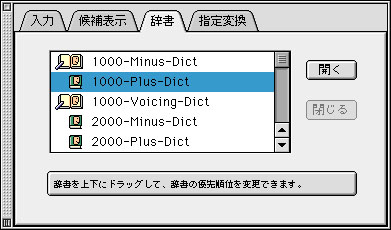
Learner's Conversion Dictionaries for Japanese Input Methods
Kazumi Hatasa (khatasa@purdue.edu) & Wonchang Chung
Department of Foreign Languages and Literatures, Purdue University
There are six dictionaries altogether. The 1000 series contain words which are consist of most frequent 1000 kanji (approximately, kyoiku kanji) while the 2000 series montain words which are consist of the most frequent 2000 kanji. (joyo kanji) In eitehr series, Minus-Dict contains entries which have missing kana. (e.g. "ぎんこ" is registered as a reading of 銀行 or "おな" is registered as a reading of 女) Voicing-Dict contains errors on voicing. (e.g. "ちが" is registered as a reading of 地下) Plus-Dict contains words which have extraneous long vowels. (e.g. "じしょう" is registered as a reading of 辞書)
1000-Minus-Dict
1000-Voicing-Dict
1000-Plus-Dict
2000-Minus-Dict
2000-Voicing-Dict
2000-Plus-Dict
A user needs to open necessary dictionaries to handle errorneous inputs. This is done in 環境設定パレット in kotoeri, and in Micorsoft IME-2000 property page of Windows 98/2000.

Kotoeri setting (環境設定パレット)
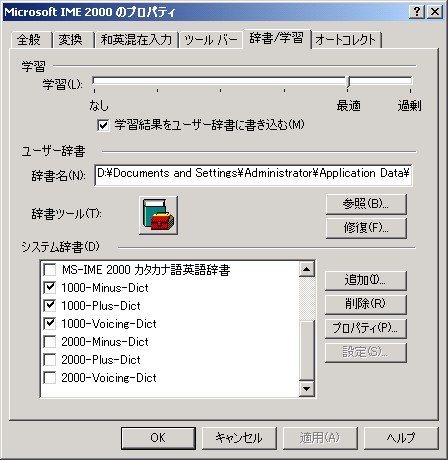
MS-IME property
The following illustrates how conversion possibilities are presented on the screen when "かくせい" is typed.
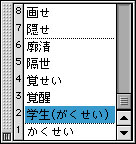
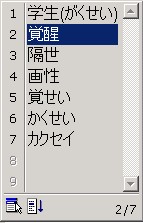
Example conversion screen with ことえり and MS-IME
Download:
Learner's conversion dictionaries
MS-IME (Win 98 and Win 2000)2.7 MB
Kotoeri (Mac OS) 4.7 MB
ATOK users
ATOK is a commercial IME developed and sold by Just System. It is available for both Windows and Macintosh. We have packaged a set for ATOK13 for Windows.
ATOK allows users to generate their own main dictionaries. Two main dictionaries for 1000-kanji level and 2000-kanji level have been generated. (i.e. 1000-Main-Dict and 2000-Main-Dict) For example, when you use 1000-Main-Dict, instead of the default main dictionary, no kanji beyond 1000-level will ever appear in the conversion process. Hence, the number of conversion possibilities becomes much smaller and manageable.
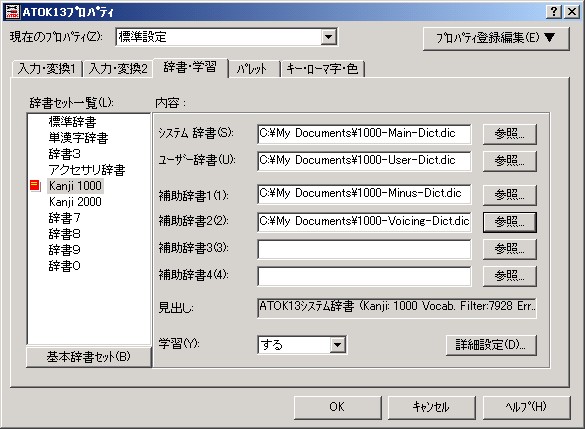
ATOK13 Property
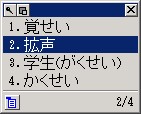
Example converstio screen with ATOK13 (input: かくせい)
Since there are different versions of ATOK is in use both on Windows and Macintosh, you may have to recompile dictionaries using Dictionary Utility Program which comes with the version of ATOK you are using.
download:
References
土屋順一 (2000) 「外国人学習者の日本語ワープロ誤入力の分析と外国人用漢字変換辞書の開発」文部省科学研究報告書 課題番号09680296
Hatasa, K. (2001) "Study of Japanese Input Method for Learners of Japanese" 35th Annual Convention of ACTFL. Washington D.C.
Kubota, R. (1999) "Word Processing and WWW Projcts in a College Japanese Language Class." Foreign Language Annals, 32(2), 205-218.